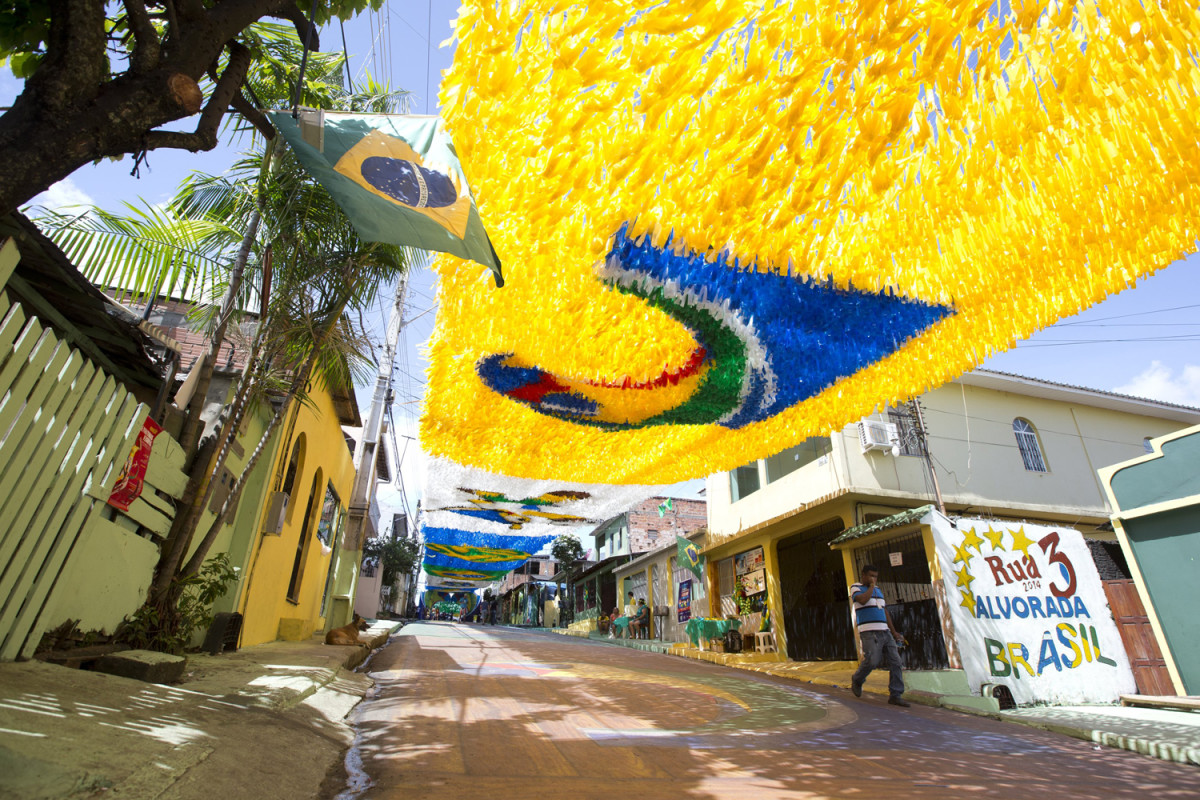Greetings from Brazil: Building a World Cup stadium fit for the Amazon


MANAUS, Brazil – There is a soccer stadium here in the closest major city to the jungle. Its grandstands are painted the colors of fruits from the Amazon, a blend of papaya and mango and pineapple, a fruit smoothie of seats.
The stadium cost about $300 million to build, with materials shipped across the Atlantic Ocean and down the Amazon River into a city known for so many disparate elements. Industry. Culture. Factories. Opera. And its location in the rainforest.
Three workers died during construction, and in the neighborhoods that surround perhaps the strangest location for a major stadium in sports, there are phrases scribbled in Portuguese. They read, roughly translated, “no World Cup” and “we have a great stadium but bad hospitals” and “come to the streets do not go to the stadium.”
Not World Cup fever, but the opposite.
The Arena daAmazonia stands out like a spaceship, a hulk of crisscrossed white beams that rise and weave together above a flat skyline. But the stadium – its cost, its purpose – makes little sense, even to many locals. It was built, ostensibly, to host four World Cup matches, to draw attention and tourists and their vacation reals (the local currency) to this remote region, reachable from the rest of Brazil only by boat or plane.
That’s all well and great until July, when Manaus’s host turn ends and an arena with roughly 42,000 seats must host, or become, or transform into … something. The city’s soccer teams all play at the bottom levels of Brazil’s professional leagues. They might fill 1/40th of the seats.
On Tuesday, workers in blue jumpsuits put the final touches on the arena in the Amazon. They hammered together a sound stage and laid gravel in a parking lot. Construction cranes beeped. Janitors swept. Guards withstood the heat to monitor credentials.
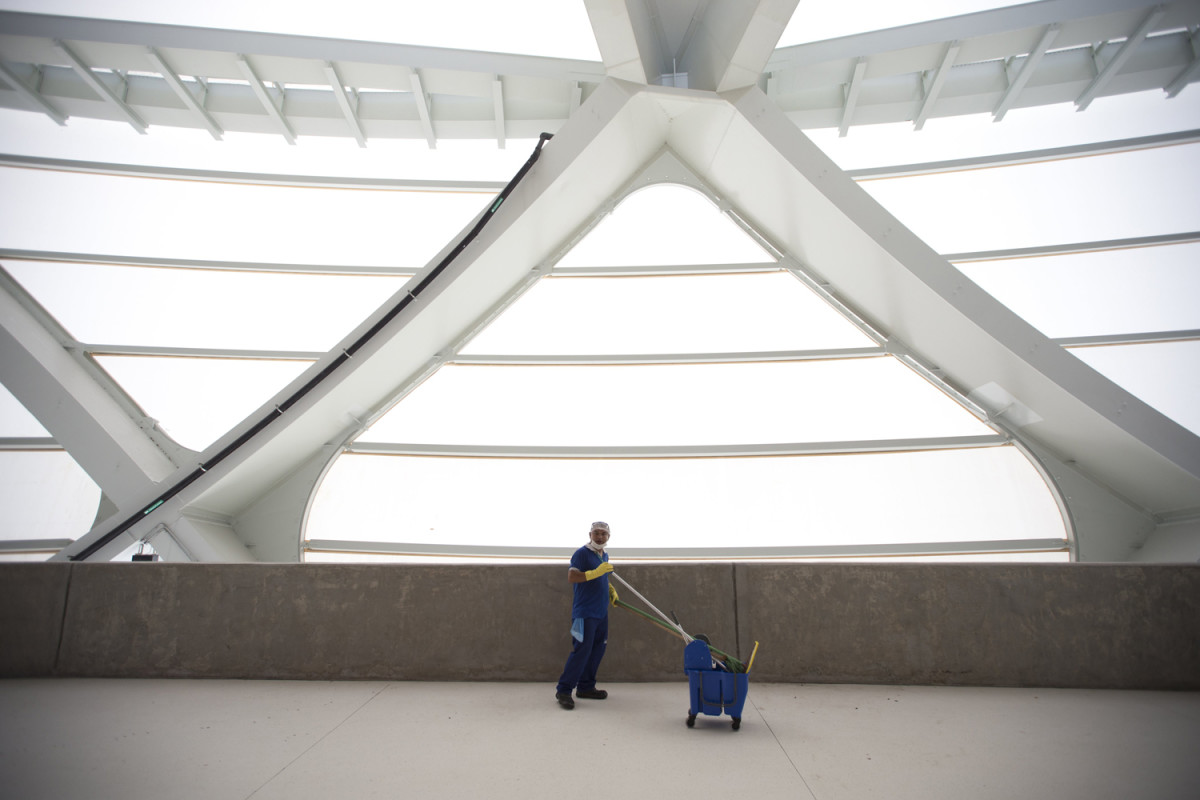
Across one street, there was a car dealership and what looked like a gravel factory and a fence lined with barbed wire and decorated with official graffiti, two hands clasped and soccer cleats and that familiar (sponsor alert!) Coca-Cola red. Near that, locals had painted a side street in Brazil’s home colors, green and yellow and some blue. Ribbons of the same colors hung overhead. One house strung festive balloons and noisemakers across a patio. Across the street, another house wobbled, gutted, as construction workers began a remodel. Down the block, more spray-painted scribbles of protests. Here was Manaus’ central question – to embrace the World Cup or not – spelled out in 50 feet.
“The stadium is beautiful,” said Wilson Maia Junioa, whose girlfriend lives on the side street. “What they do after, I don’t know. I don’t know what it’s for.”
The Arena da Amazonia is indicative of a larger World Cup stadium debate, one not unfamiliar to cities that host the World Cup or the Olympics but particularly pronounced here. Officials picked 12 cities to showcase games, which is double the number that played host the last time the World Cup was in Brazil. The mayor of Rio, Eduardo Paes, recently told reporters the sheer volume of cities selected was a mistake. The price tag to construct all those stadiums eventually crept over $4 billion – four times the initial budget.
But where locals here see waste and excess and a stadium likely to sit mostly empty or be turned into something else – a prison has been suggested – Roberio Braga sees opportunity.
Braga is the secretary of culture in the Amazonas, the largest Brazilian state. His crown jewel is the Teatro Amazonas, an opera house fashioned in European style that dominates downtown.
The secretary is not an athlete, but he is a soccer fan, and he does see parallels between art and this particular sport. He mentions Manuel Francisco dos Santos, or Garrincha, the Brazilian known for “the best feet in futbol,” feet that belonged in ballet slippers instead of cleats. And Waldyr Pereira, nicknamed Didi, the so-called inventor of folha seca (translation: dry leaf) kicks that bent like poetry in perfect arcs.
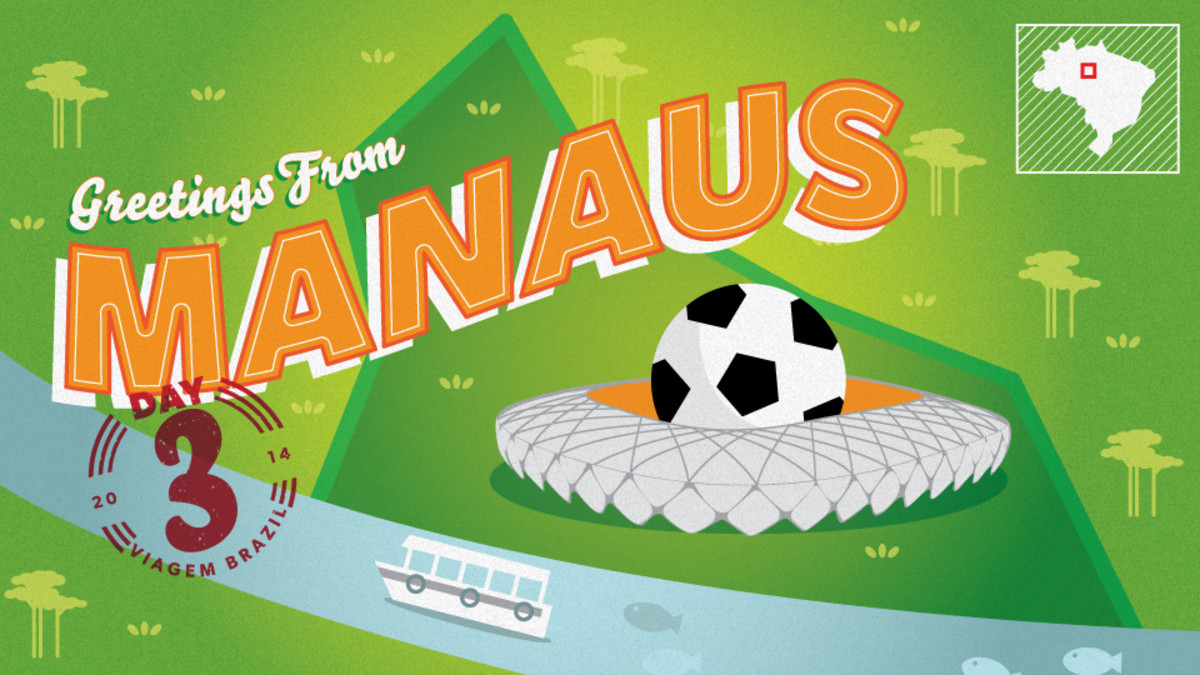
To Braga, such parallels are important. See, Manaus built another grand arena in 1896, and doomsdayers also predicted its demise, wondered how long it might last.
That was the Teatro Amazonas.
Braga ran down the history: The locals wanted Manaus to be the “Paris of the tropics,” and they imported all the latest – furniture, clothes – from Europe. Some even faked French accents. The theater mimicked all of that, with its various materials also shipped across the Atlantic and down the Amazon: chandeliers from France, marble from Italy, iron balconies from England, glass from Venice, so much pomp and velvet and crystal that inside it feels a million miles from the jungle (Details provided by tour guide Juliana Rodrigues).
In 1924, the rubber economy collapsed. The city, Braga said, lost power and energy. Rich families bolted town. The university shut down. He picked back up in 1970, through an interpreter, Thais Vasconcelos. That’s the year the economy started to improve.
Greetings from Brazil: Showing the world Manaus, hoping for progress
By 1997, officials created the secretary of culture post, his position. Their first opera, they needed to import an orchestra. They could not find even a single violin. It sounds crazy, putting an opera house in the middle of the rainforest. But this year, the 18th straight opera festival will take place without any imports, save for the construction of the theater itself, a venue often ranked among the most beautiful of its kind in the world. Braga said that spirit, for opera and theater and cinema, already existed here. What the locals needed was an outlet, a place to gather and enjoy.
Brazil is also undoubtedly a soccer country, with a record tally of five World Cup titles that Braga promised will soon be six. Soccer, he hoped, will reveal everything else about Manaus and give the city another venue for the arts, a stadium that can host concerts and other events and exhibitions, of which he was not clear on specifics.
“The problem is our country is always in transformation,” Braga said. “And the people are waiting more, which is sad. But this is a great opportunity to show our culture to the world. It’s also our issue, our matter, to keep the forests intact. To preserve. As long as we have tourists, and we increase our economy, we keep our forests undisturbed.”
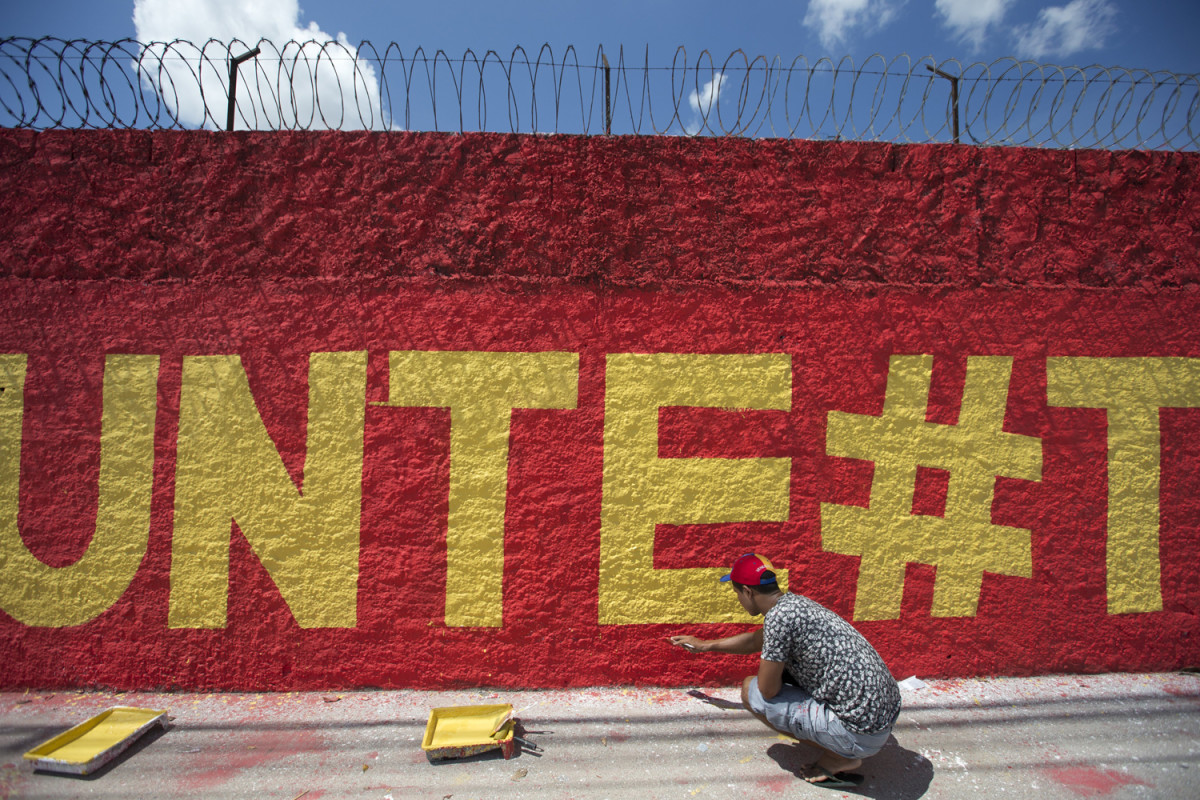
For those concerned with readiness, Braga says Manaus has 999 events planned in a 45-day stretch. It has already hosted Carnival, operas, jazz concerts, rock concerts, theater and so many festivals that his list stopped around 10.
Then Braga paused while an assistant fetched a traditional basket, woven with different colored threads, black and orange and red. He pushed the basket together until it resembled the stadium.
“That’s the same thing I told the governor,” he said.
It’s a long way from that line of logic to the successful launch of a stadium that could become a multipurpose cultural center and a few miles from the opera house to Ponta Negra, the upscale local beach. Two men, Ribamar and Angelo, operated basically a concession stand there on Tuesday afternoon, down on the beach below the empty soccer Fanfest that had been constructed. They said the area would have been unrecognizable a year ago, so much work had been done. Drunk men who sometimes drowned, Ribamar said, were now watched by police and lifeguards. Sand had been imported. Soccer goals had been set up.
The two men were not happy. The electricity they had been promised had yet to materialize, forcing them to sink much of their revenue into ice. They also said they were only allowed to sell goods from official World Cup sponsors – Brahma beer and Coca-Cola and Pringles and the like. The restrictions were also cutting into potential profits.
Meanwhile, the palatial stadium sat up the road. “For what?” Ribamar said. “Just because of the World Cup?”
Four games – including the United States against Portugal on June 22 – will be played there.
Neither of them had tickets.
This is the third piece in a series throughout opening weeks of the World Cup, in which SI senior writer Greg Bishop and photographer Simon Bruty chronicle their travel to offer a taste of the cultural side of Brazil. They begin their travels in the Amazon city of Manaus.
Bishop Day 3 Photo Gallery - Manaus
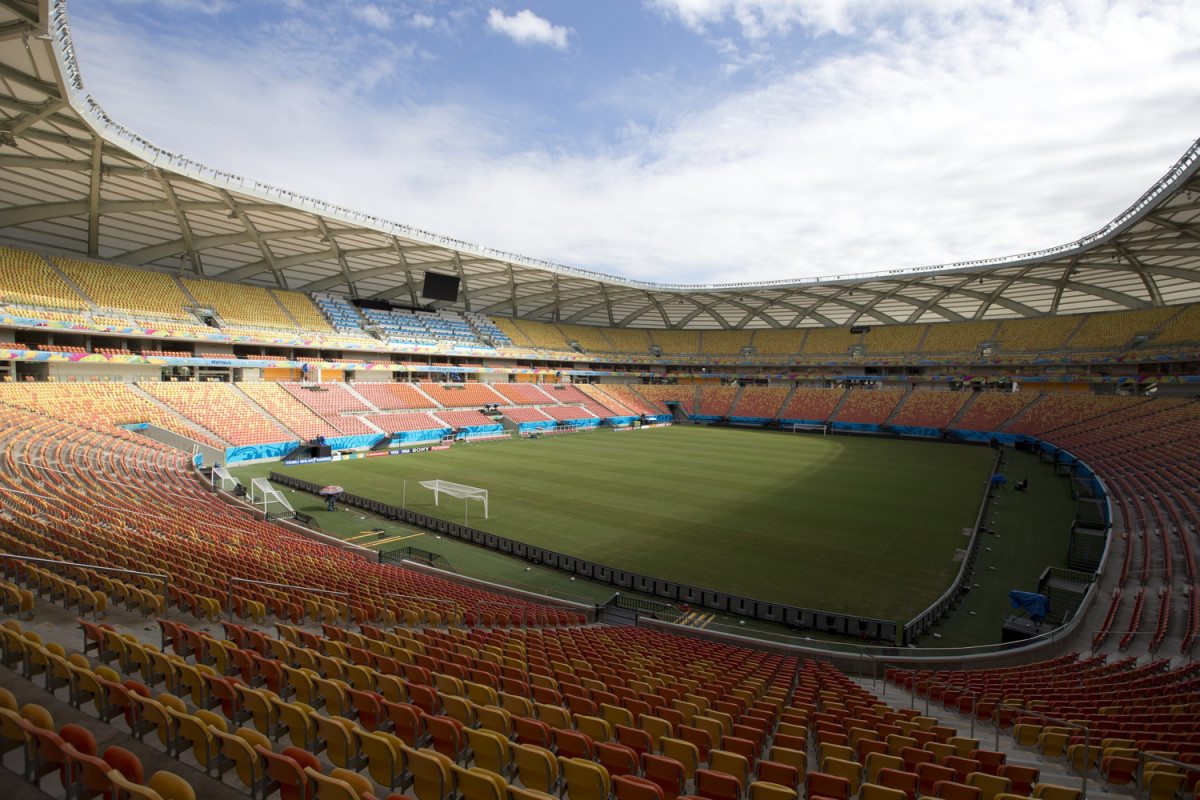
Greetings From Manaus: Greg Bishop and Simon Bruty's Travel Guide to the Other Side of the World Cup. (Photos by Simon Bruty/SI)
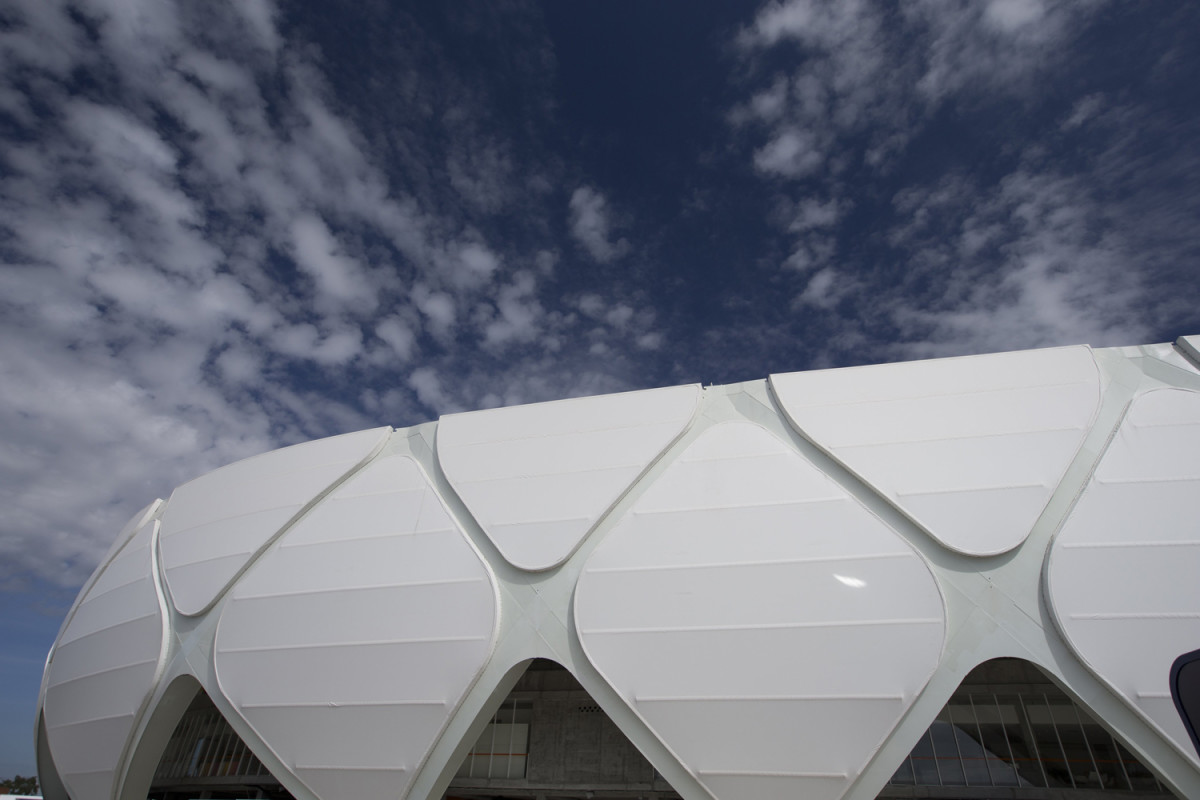
Greetings From Manaus: Greg Bishop and Simon Bruty's Travel Guide to the Other Side of the World Cup. (Photos by Simon Bruty/SI)
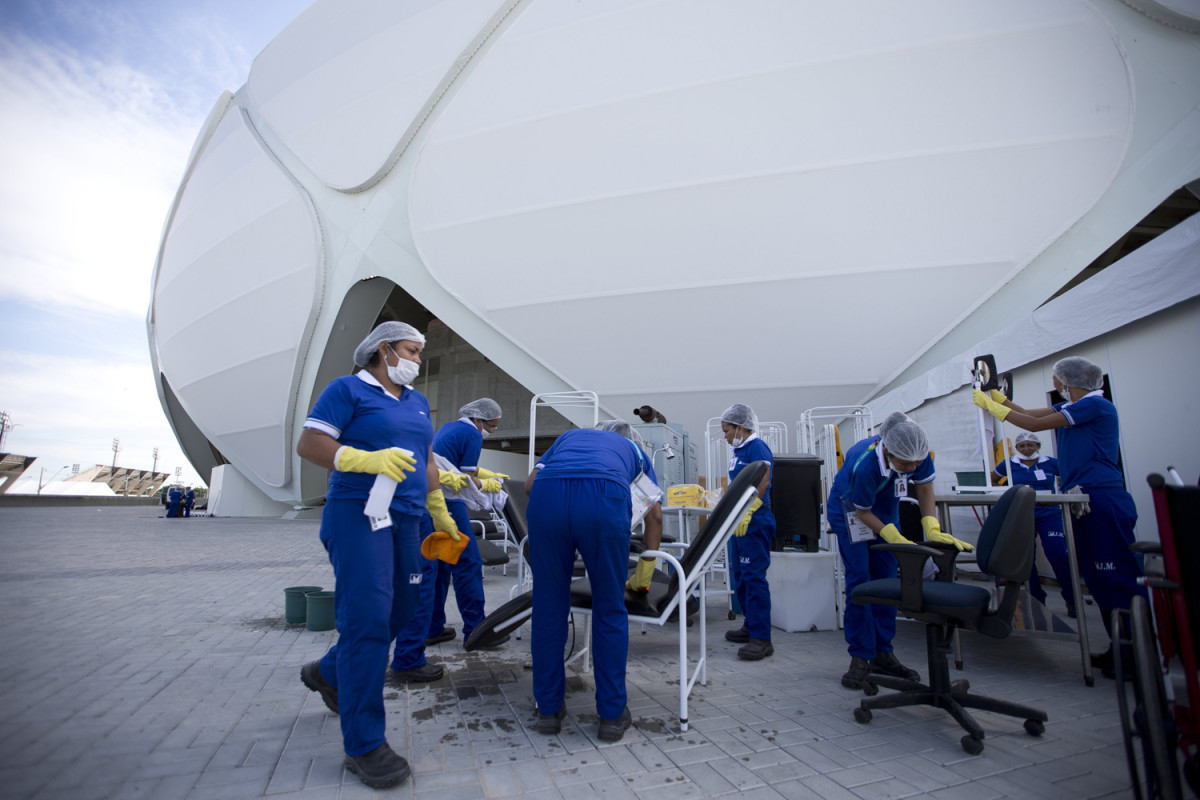
Greetings From Manaus: Greg Bishop and Simon Bruty's Travel Guide to the Other Side of the World Cup. (Photos by Simon Bruty/SI)
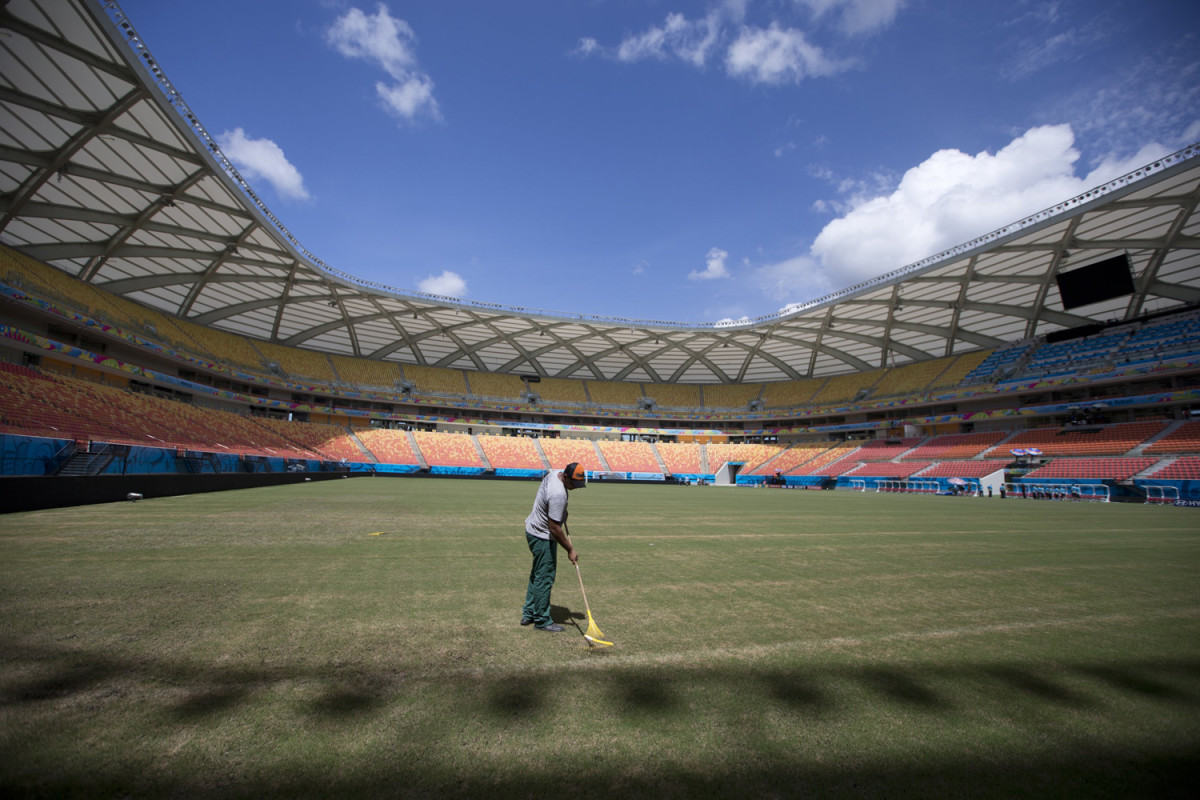
Greetings From Manaus: Greg Bishop and Simon Bruty's Travel Guide to the Other Side of the World Cup. (Photos by Simon Bruty/SI)
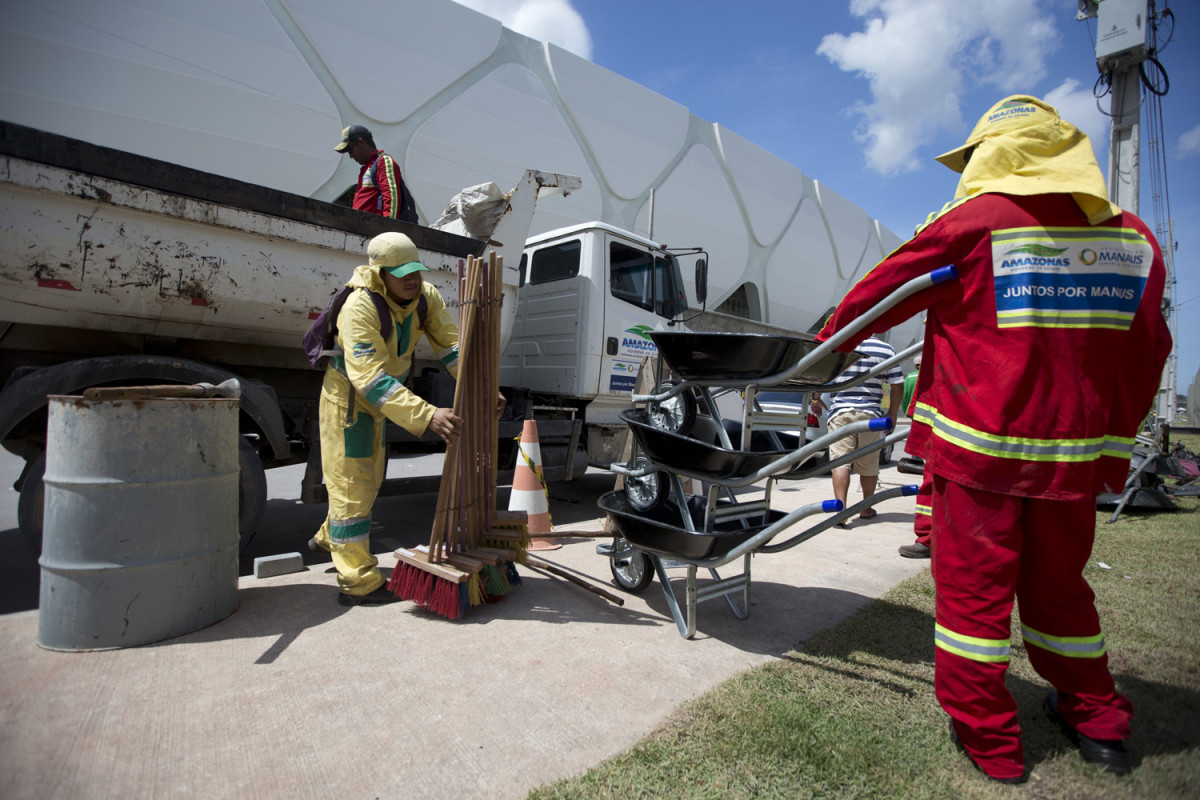
Greetings From Manaus: Greg Bishop and Simon Bruty's Travel Guide to the Other Side of the World Cup. (Photos by Simon Bruty/SI)
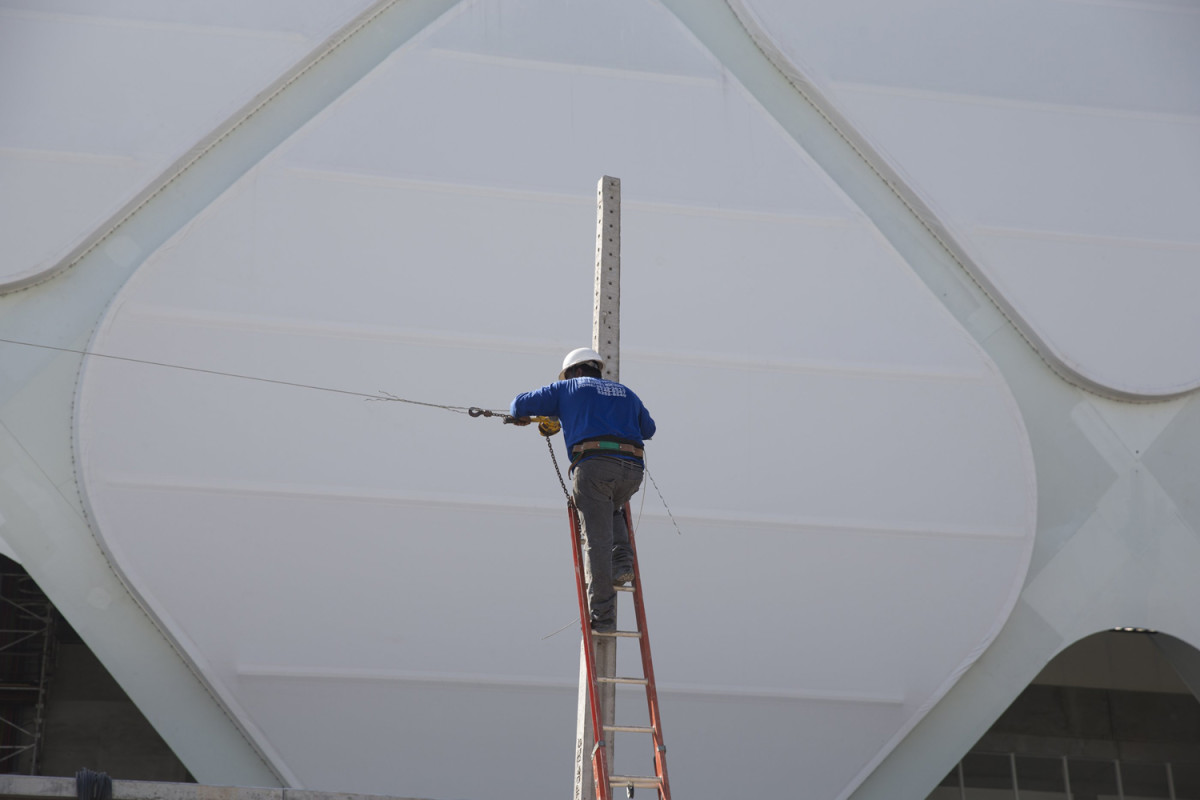
Greetings From Manaus: Greg Bishop and Simon Bruty's Travel Guide to the Other Side of the World Cup. (Photos by Simon Bruty/SI)

A janitor sweeps the inside of the Arena da Amazonias in preparation for the World Cup in Manaus.
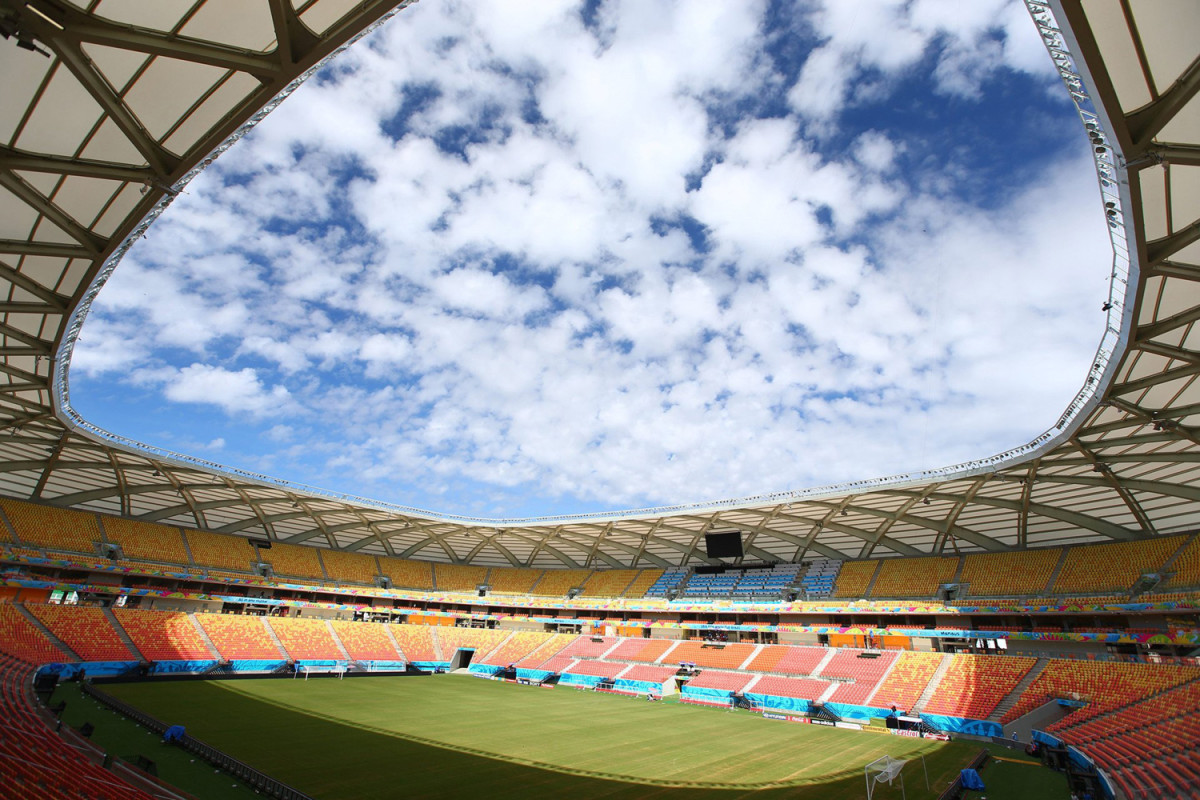
Greetings From Manaus: Greg Bishop and Simon Bruty's Travel Guide to the Other Side of the World Cup. (Photos by Simon Bruty/SI)

In the neighborhoods that surround perhaps the strangest location for a major stadium in sports, there are phrases scribbled in Portuguese. They read, roughly translated, “no World Cup” and “we have a great stadium but bad hospitals.” Not World Cup fever, but the opposite.
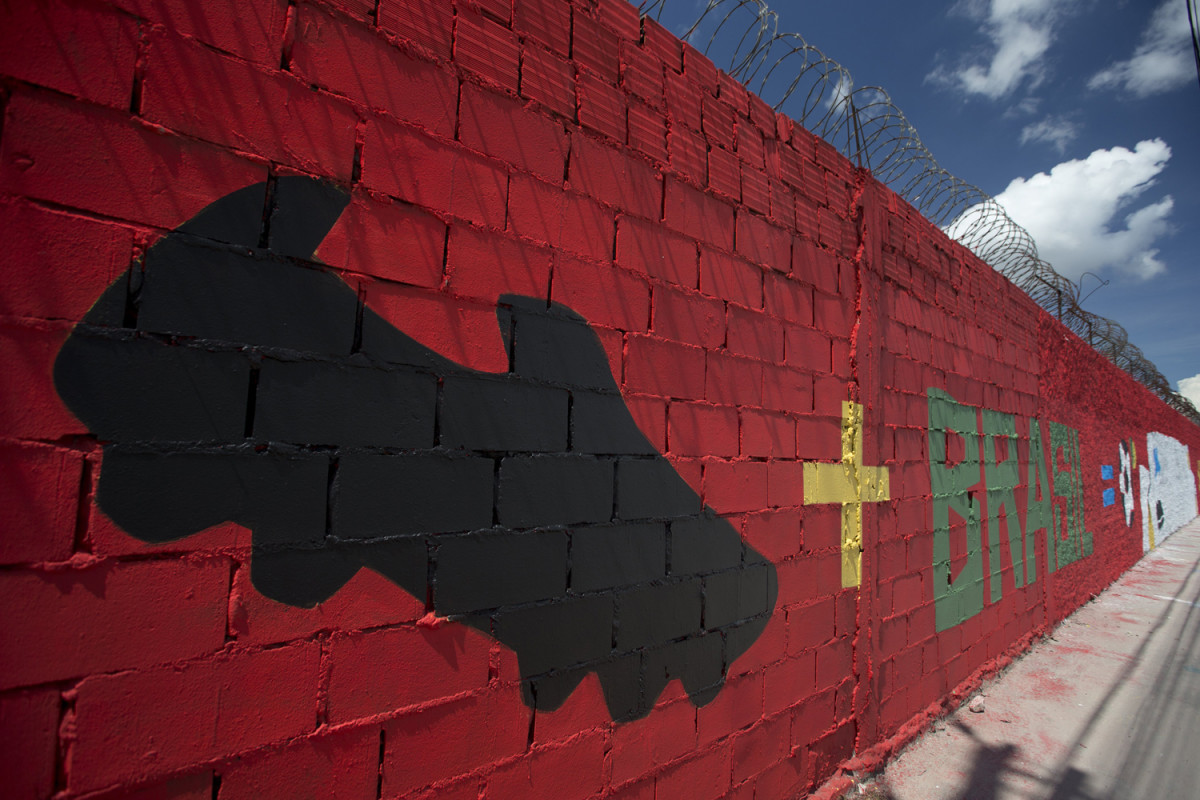
Greetings From Manaus: Greg Bishop and Simon Bruty's Travel Guide to the Other Side of the World Cup. (Photos by Simon Bruty/SI)
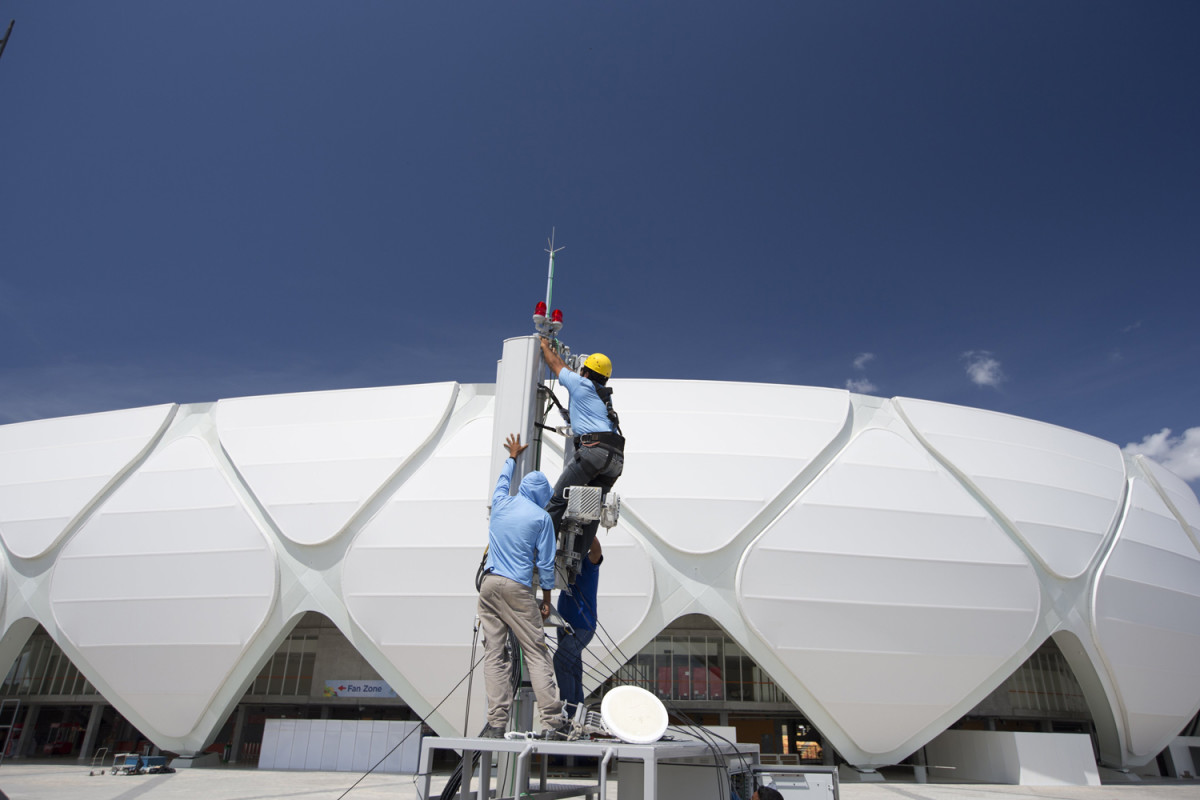
Greetings From Manaus: Greg Bishop and Simon Bruty's Travel Guide to the Other Side of the World Cup. (Photos by Simon Bruty/SI)
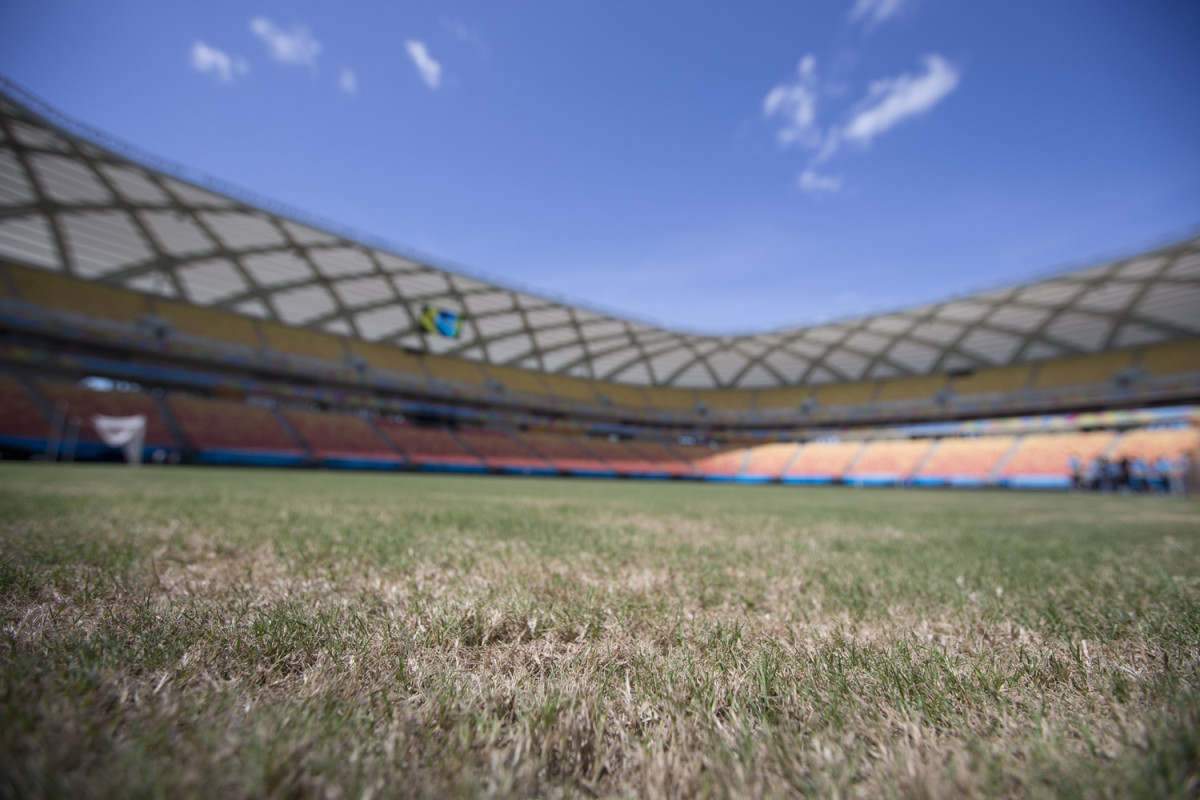
Greetings From Manaus: Greg Bishop and Simon Bruty's Travel Guide to the Other Side of the World Cup. (Photos by Simon Bruty/SI)
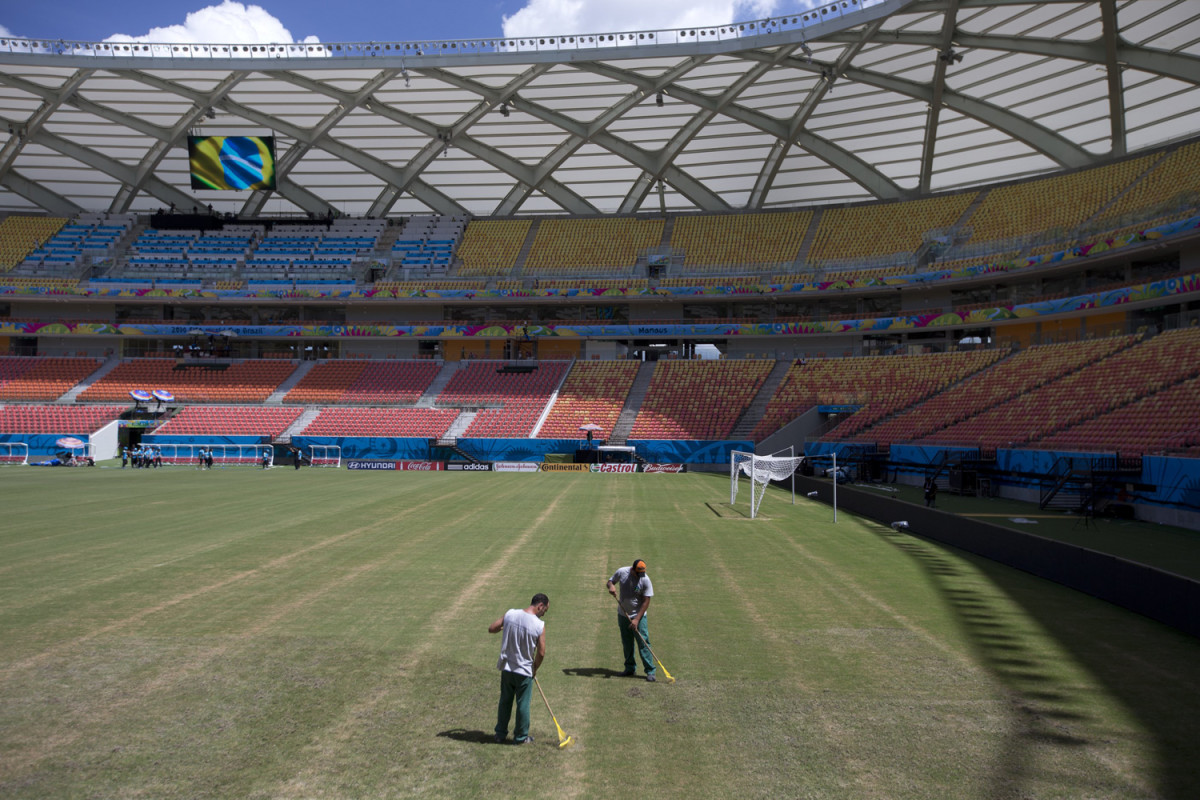
Greetings From Manaus: Greg Bishop and Simon Bruty's Travel Guide to the Other Side of the World Cup. (Photos by Simon Bruty/SI)
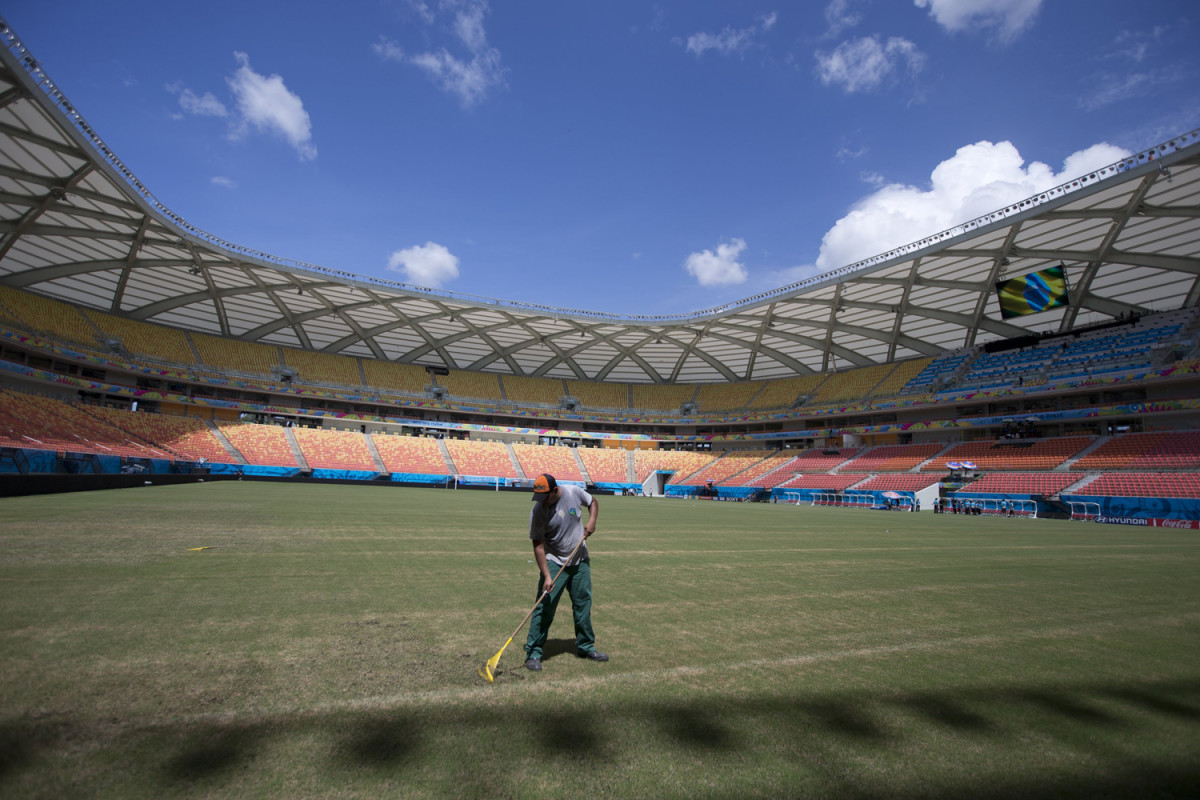
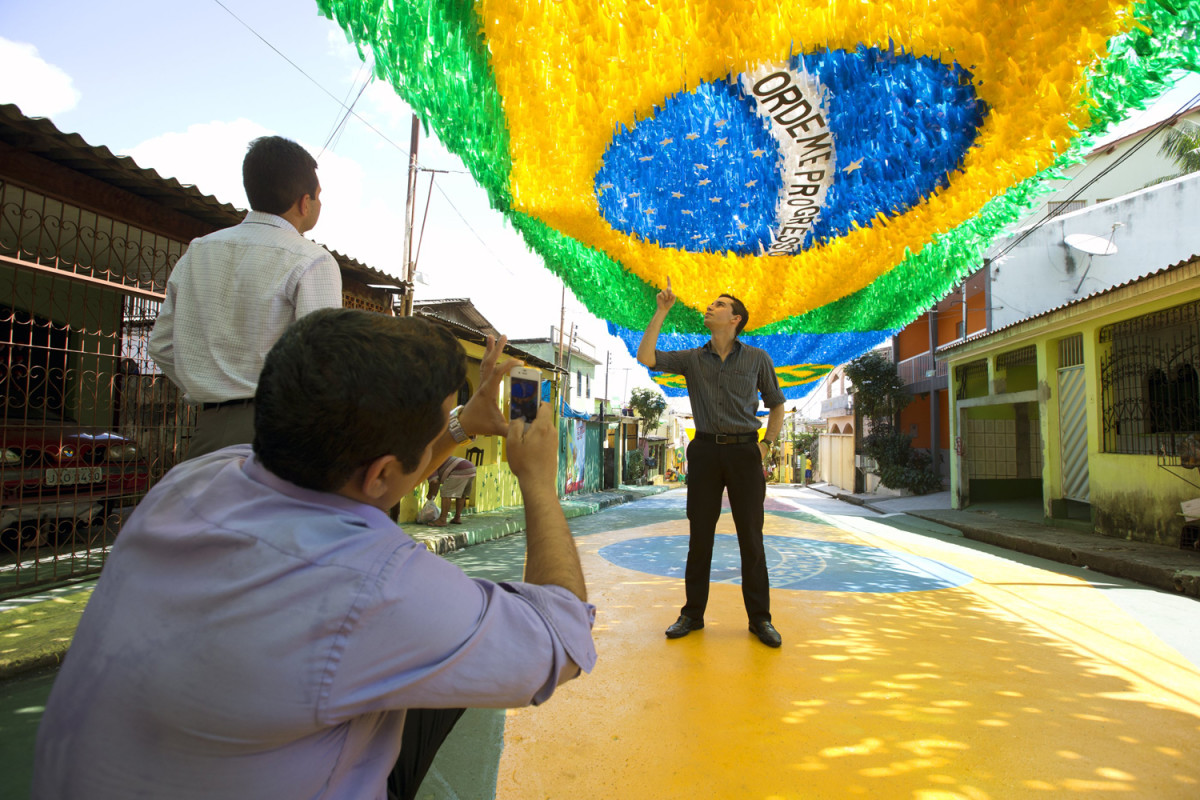
Greetings From Manaus: Greg Bishop and Simon Bruty's Travel Guide to the Other Side of the World Cup. (Photos by Simon Bruty/SI)
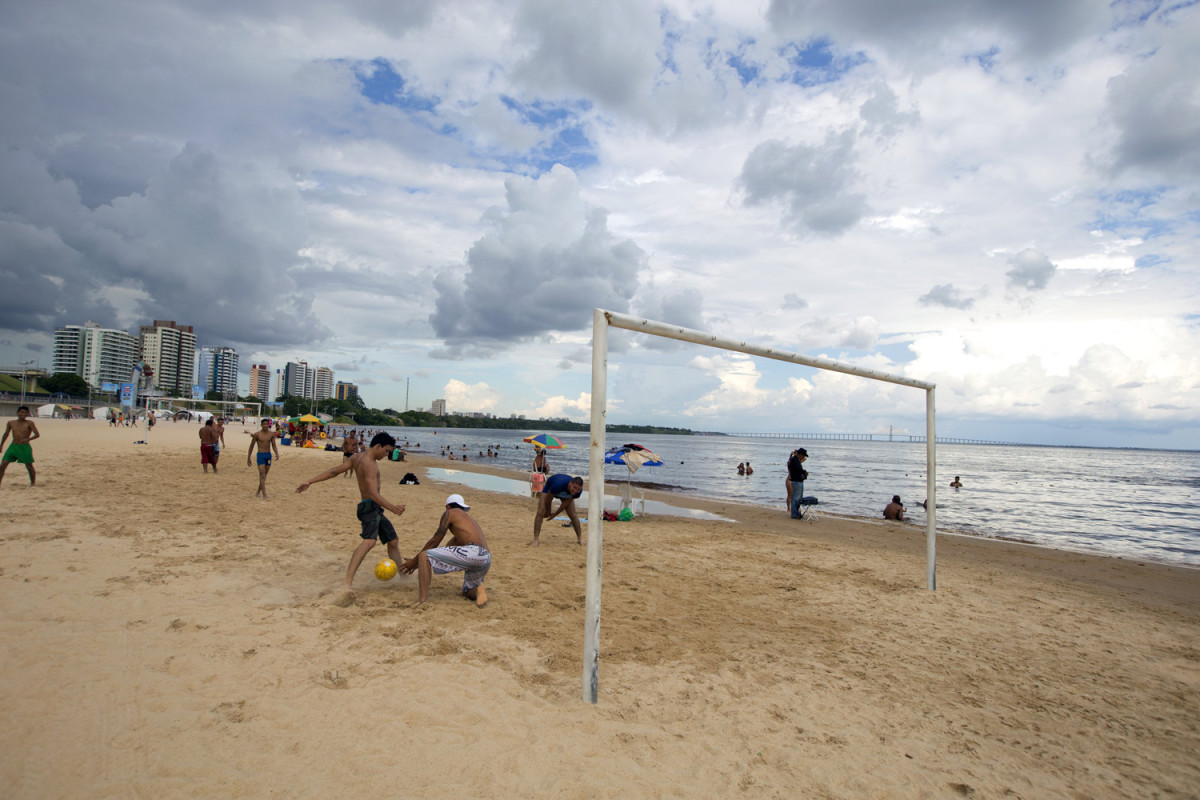
Greetings From Manaus: Greg Bishop and Simon Bruty's Travel Guide to the Other Side of the World Cup. (Photos by Simon Bruty/SI)
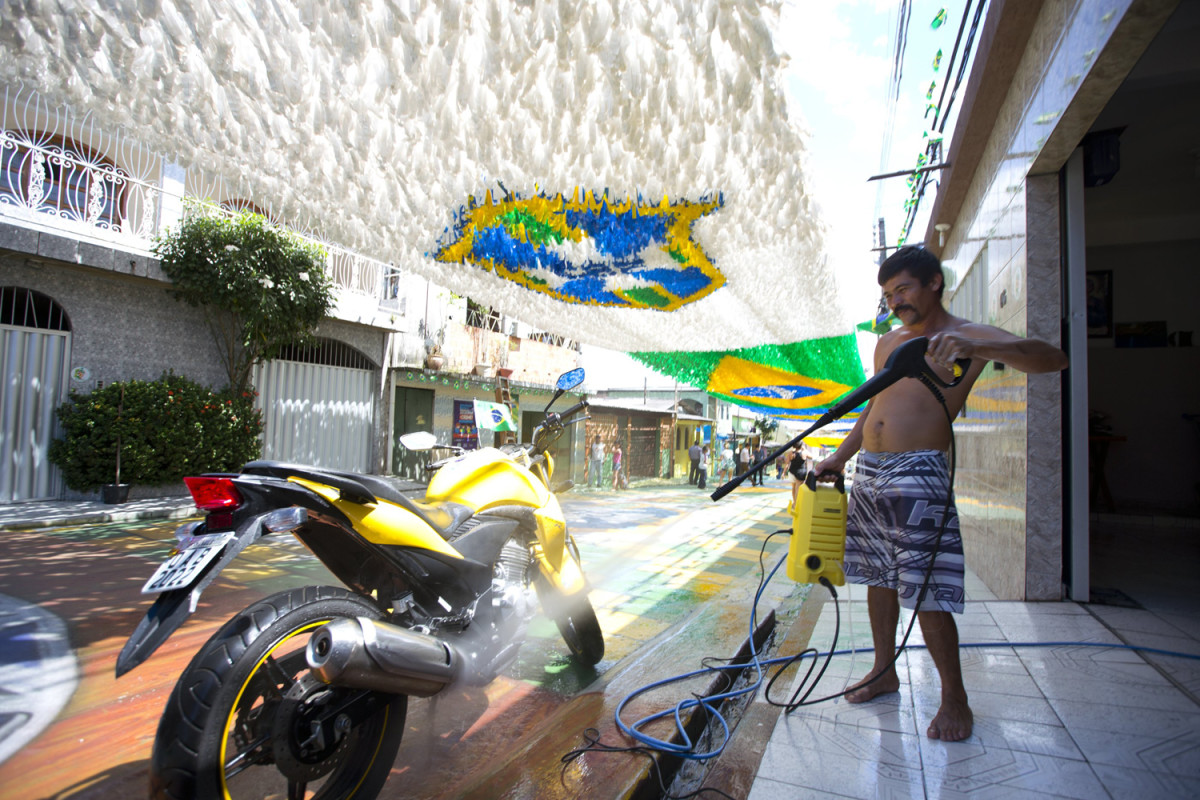
Greetings From Manaus: Greg Bishop and Simon Bruty's Travel Guide to the Other Side of the World Cup. (Photos by Simon Bruty/SI)
